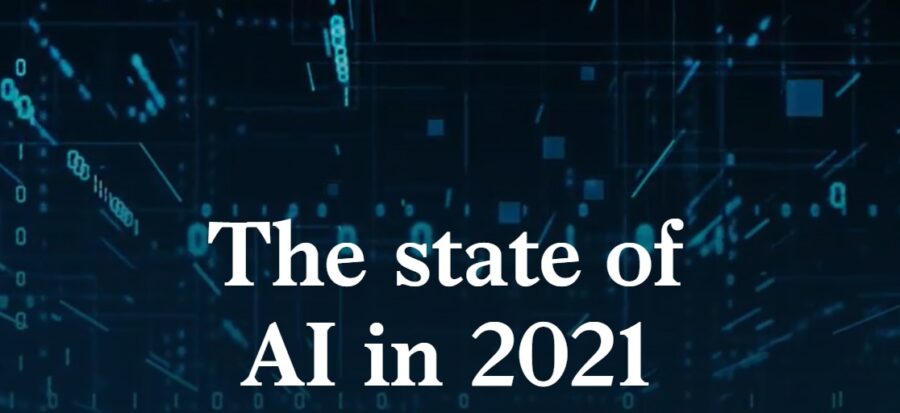
It’s the end, of the year and its time to reflect back on the year. Mc kinsey has published a state of AI for 2021.
Here are some insights from that report and my view on it
- AI adoption is maturing
- AI adoption is continuing its steady rise
- business functions where AI adoption is most common are service operations, product and service development, and marketing and sales, though the most popular use cases span a range of functions.
- The top three use cases are service-operations optimization, AI-based enhancement of products, and contact-center automation
- Companies are aware of risks and also threats
- Companies are deploying risk mitigation strategies
- Professional standards of development are being adopted such as design thinking, model performance tracking, data governance, data quality, AI governance framework, capabilities to develop individual talent
Here are my top four insights from the state of AI 2021 survey
1) The most popular AI use cases span a range of functional activities.
- Service-operations optimization
- New AI-based enhancements of products
- Contact-center automation
- Product-feature optimization
- Predictive service and intervention
- Customer-service analytics
- Creation of new AI-based products
- Customer segmentation
- Risk modeling and analytics
- Fraud and debt analytics
2) Organizations seeing the highest returns from AI are more likely to follow both core and more advanced best practices.
- Use design thinking when developing AI tools
- Test the performance of our AI models internally before deployment
- Track the performance of AI models to ensure that process outcomes and/or models improve over time
- Have well-defined processes for data governance
- Have protocols in place to ensure good data quality
- Have a clear framework for AI governance that covers the model-development process
- AI-development teams follow standard protocols for building and delivering AI tools
- Have well-defined capability-building programs to develop technology personnel’s AI skills
3) Organizations see significant AI risks
- Cybersecurity
- Regulatory compliance
- Explainability²
- Personal/individual privacy
- Organizational reputation
- Equity and fairness
- Workforce/labor displacement
- Physical safety
- National security
- Political stability
4) Organizations are engaging in AI risk-mitigation practices
- Model documentation
- Training and testing data
- Measuring model bias and accuracy
- Training and testing data
- Scan training and testing data to detect the underrepresentation of protected characteristics and/or attributes
- Data professionals actively check for skewed or biased data during data ingestion
- Increase the representation of protected characteristics and/or attributes in our training and testing data as needed
- Data professionals actively check for skewed or biased data at several stages of model development
- Legal and risk professionals work with data-science teams to help them understand definitions of bias and protected classes
- Have a dedicated governance committee that includes risk and legal professionals
Source – mc kinsey
